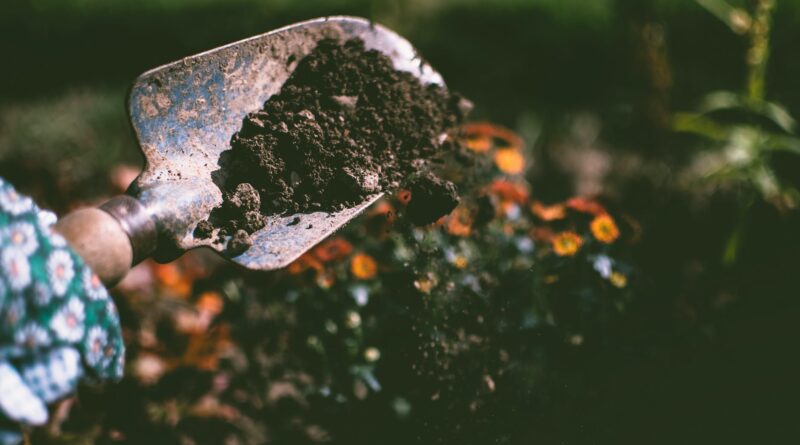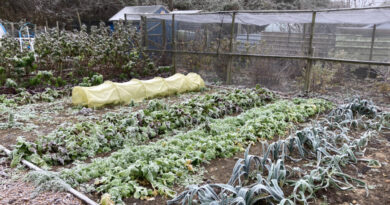Allotment Challenges and Solutions: Dealing with Common Garden Issues
Allotment gardening can be a rewarding experience, but it’s not without its challenges. From pests to weather conditions, there are many obstacles that can make it difficult to maintain a thriving garden. However, with the right techniques and tools, you can overcome common issues and enjoy a bountiful harvest. Here are some common allotment challenges and solutions to help you overcome them.
Pest Infestations
Insects and other pests can wreak havoc on your plants, resulting in stunted growth, yellowing leaves, and even complete plant loss. To prevent infestations, it’s important to keep your plot clean and tidy, and remove any debris that could provide a breeding ground for pests. You can also use natural pest control methods such as companion planting, using organic pesticides, or creating barriers with netting or fleece.
Companion planting involves growing certain plants together that have natural pest-repelling properties. For example, marigolds are known to deter aphids, while garlic can help to keep slugs and snails at bay. Organic pesticides, such as neem oil, pyrethrum, or soap spray, can also help to control pest populations without harmful chemicals.
Soil Quality
Soil quality is essential to the growth of healthy plants. If your soil is lacking in nutrients, your plants may struggle to grow and produce a good harvest. To improve soil quality, you may need to add compost or other organic matter to provide the necessary nutrients for plant growth. You can also perform a soil test to determine if there are any nutrient deficiencies that need to be addressed.
Adding organic matter, such as compost or well-rotted manure, can help to improve soil structure and fertility. These materials provide essential nutrients for plant growth and help to retain moisture in the soil. Alternatively, you can use fertilisers specifically designed for allotment gardening, such as fish blood and bone or seaweed meal.
Weather Conditions
Weather conditions can greatly impact your allotment, with too much rain causing waterlogging or not enough rain causing drought. To combat these issues, ensure your plot has proper drainage and consider using water-saving methods such as mulching or drip irrigation.
Mulching involves covering the soil surface with organic matter such as straw, wood chips, or compost. This helps to retain moisture in the soil and suppress weed growth. Drip irrigation is a method of watering plants that delivers water directly to the roots, reducing water waste and minimizing the risk of overwatering.

Weeds
Weeds can compete with your plants for nutrients and water, so it’s important to keep them under control. You can use a hoe or hand tools to remove weeds manually or use organic weed killers, such as vinegar or boiling water, to control them.
Mulching can also help to suppress weed growth, as can using weed barriers such as landscape fabric or cardboard. Weed barriers prevent light from reaching the soil, which inhibits weed growth.
Lack of Time
Maintaining an allotment requires time and effort, which can be difficult to find in a busy schedule. To make the most of your time, prioritize essential tasks such as watering, weeding, and harvesting, and consider recruiting a friend or family member to help.
Alternatively, you can use time-saving techniques such as planting in raised beds, which require less maintenance than traditional rows. You can also use permaculture techniques, such as planting perennials, which require less upkeep than annual crops.
Lack of Knowledge
If you’re new to allotment gardening, it can be overwhelming to know where to start. Fortunately, there are many resources available online or at your local gardening center. Joining a gardening group or attending workshops can also help you gain knowledge and confidence in managing your plot.
You can also start small and gradually build your skills and knowledge as you go. Focus on a few crops that are easy to grow, such as tomatoes, broccoli, or herbs, and learn about their specific growing requirements. As you gain experience and confidence, you can expand your garden and try new crops.
Allotment gardening can be challenging, but with the right techniques and tools, you can overcome common issues and enjoy a successful harvest. By addressing pest infestations, improving soil quality, managing weather conditions, controlling weeds, and optimizing your time and knowledge, you can create a thriving garden that provides fresh, healthy produce for you and your family. Remember to approach gardening with patience and persistence, and don’t be afraid to ask for help or advice when needed. Happy gardening!




